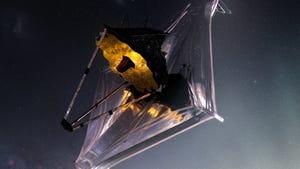
NASA Traces Webb Space Telescope Glitch to Galactic Cosmic Ray - CNET
Space will throw you for a loop, even if you’re one of the fanciest and highest tech observatories ever made. NASA’s James Webb Space Telescope experienced a technical glitch in January with its Near Infrared Imager and Slitless Spectrograph, or Niriss. After some sleuthing, NASA thinks it knows the culprit: a galactic cosmic ray.
Niriss can be used to detect exoplanets and learn about their atmospheres. On Jan. 15, Niriss experienced what NASA described as “a communications delay within the science instrument, causing its flight software to time out.” The glitch put an unexpected pause on the instrument’s science observations.
NASA and the Canadian Space Agency (which designed Niriss for Webb) teamed up to investigate the problem. In a statement Tuesday, NASA said, “The cause was determined to likely be a galactic cosmic ray, a form of high-energy radiation from outside our solar system that can sometimes disrupt electrical systems.”
The fix involved a space telescope version of “turning it off and turning it back on again.” The Webb team rebooted the instrument. After a test observation, NASA confirmed Niriss is back up and running as of the end of January.
Galactic cosmic rays are a concern for more that just telescopes and other equipment out in space. NASA is researching how to protect astronauts from space radiation. The space agency isn’t too worried about rays and Webb moving forward. Said NASA, “Encountering cosmic rays is a normal and expected part of operating any spacecraft.”


